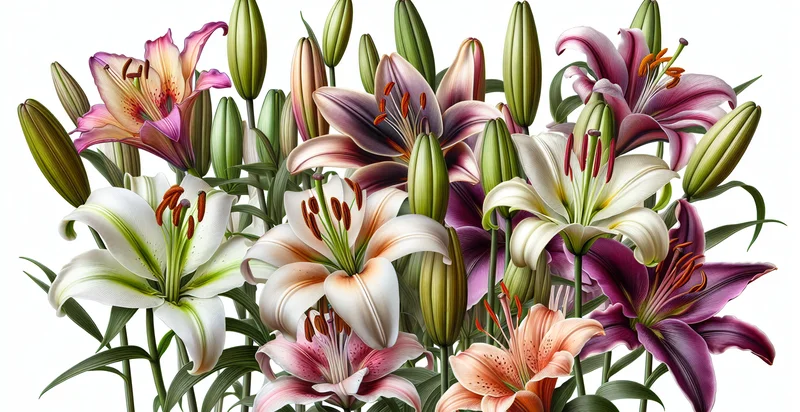Identify lily species
using AI
Below is a free classifier to identify lily species. Just upload your image, and our AI will predict what species of lily it is - in just seconds.

Contact us for API access
Or, use Nyckel to build highly-accurate custom classifiers in just minutes. No PhD required.
Get started
import nyckel
credentials = nyckel.Credentials("YOUR_CLIENT_ID", "YOUR_CLIENT_SECRET")
nyckel.invoke("lily-species", "your_image_url", credentials)
fetch('https://www.nyckel.com/v1/functions/lily-species/invoke', {
method: 'POST',
headers: {
'Authorization': 'Bearer ' + 'YOUR_BEARER_TOKEN',
'Content-Type': 'application/json',
},
body: JSON.stringify(
{"data": "your_image_url"}
)
})
.then(response => response.json())
.then(data => console.log(data));
curl -X POST \
-H "Content-Type: application/json" \
-H "Authorization: Bearer YOUR_BEARER_TOKEN" \
-d '{"data": "your_image_url"}' \
https://www.nyckel.com/v1/functions/lily-species/invoke
How this classifier works
To start, upload your image. Our AI tool will then predict what species of lily it is.
This pretrained image model uses a Nyckel-created dataset and has 20 labels, including Asian Lily, Asiatic Lily, Blackberry Lily, Calla Lily, Candidum Lily, Easter Lily, Formosum Lily, Henrys Lily, Humboldt Lily and Lemon Lily.
We'll also show a confidence score (the higher the number, the more confident the AI model is around what species of lily it is).
Whether you're just curious or building lily species detection into your application, we hope our classifier proves helpful.
Related Classifiers
Need to identify lily species at scale?
Get API or Zapier access to this classifier for free. It's perfect for:
- Botanical Research Tool: Researchers can leverage the 'lily species' identifier to enhance their studies on biodiversity. By automatically classifying various lily species in the field, the tool can assist in data collection and tracking of species distribution and environmental impacts.
- Agricultural Management: Farmers can use the identifier to monitor and manage lily crops effectively. By differentiating between lily species, they can optimize care practices tailored to specific needs, leading to improved yield and resource management.
- Eco-Tourism Enhancement: Eco-tourism businesses can utilize the identifier to create informative guides and experiences for visitors. By identifying local lily species, they can provide educational insights and promote conservation awareness, enhancing the overall visitor experience.
- Floral Design and Retail: Floral designers and retailers can use the classification function to ensure accurate sourcing and display of lily species. By identifying the specific species required for arrangements or offerings, they can meet customer demands more effectively and avoid mislabeling.
- Conservation Efforts: Conservation organizations can implement the identifier to assess and monitor ecosystem health. By classifying lily species within a habitat, they can identify endangered varieties and develop strategies for preservation and restoration.
- Gardening and Landscaping: Homeowners and landscapers can use the identifier to select and maintain appropriate lily species for their gardens. By understanding which species thrive in certain environments, they can create visually appealing and sustainable landscapes.
- Educational Tools: Educational institutions can integrate the 'lily species' identifier into biology or botany curricula. Students can engage with real-world applications of classification technology, enhancing their learning experience and fostering a deeper understanding of plant taxonomy and ecology.


